When it comes to sprinkling wood ash in the garden, not every veggie is throwing a party. Some plants, especially those that crave more acidic soil like potatoes, blueberries, cabbage, and parsley, might just look at you with a “Really?” expression. They’re more the “no ash, please” type.
Dive in with us to discover which veggies are all for the wood ash and which ones politely decline the offer. We’ll also chat about the ins and outs of using wood ash effectively. It’s all about knowing your garden residents and their likes and dislikes!
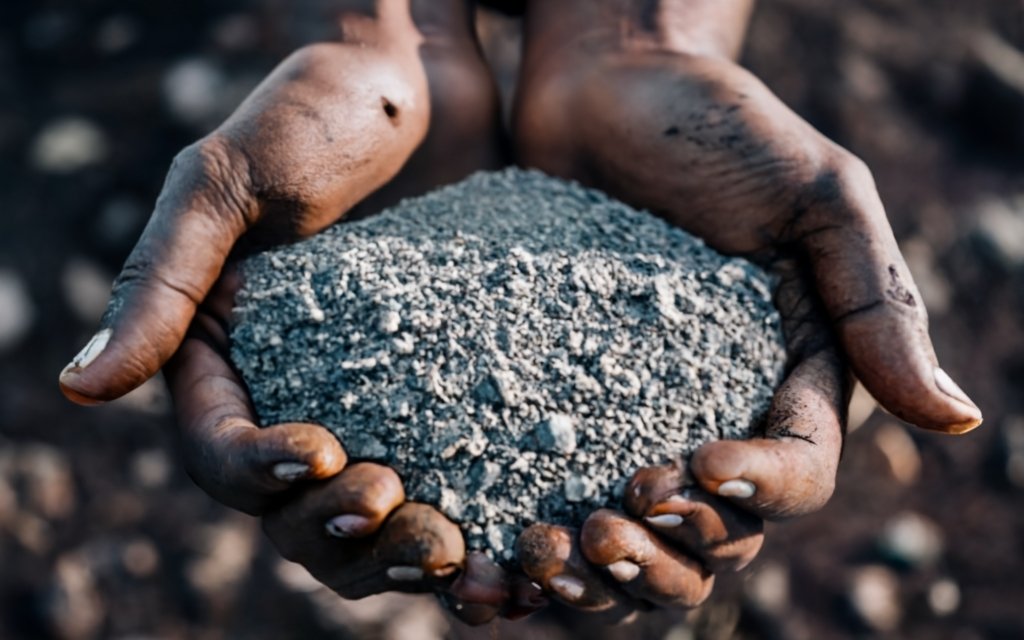
The Alkaline Nature of Wood Ash
Ever found yourself gazing at the remnants in your wood stove and wondering about its properties? Well, turns out, wood ash isn’t just any ash; it has an alkaline nature. But what does that mean for your garden soil?
Wood ash is on the high end of the pH scale, making it alkaline. That means it can raise the pH of your soil, shifting it from acidic to more neutral or even alkaline. For gardeners, this could be a game-changer, especially if your soil is naturally acidic. But, as with all things, there’s a balance to be found.
Why does this shift matter? The pH of the soil can influence the nutrients available to plants. Some plants thrive in acidic soils, while others prefer it a bit more on the neutral side. So, before you go sprinkling ash all over, it’s essential to know your soil and the needs of your plants.
Why is Wood Ash Alkaline?
Ready for a mini science lesson? Don’t worry; I’ll keep it light and fun.
The alkalinity of wood ash can be attributed to its calcium content. The same stuff that’s good for our bones. When wood burns, the calcium remains in the ash, giving it that alkaline edge.
In simpler terms, think of wood ash as that one friend who’s always super chill and calming – that’s what it does to the soil pH. It chills out the acidity and brings in a wave of calm, or in this case, alkalinity.
But, as with all good things, moderation is key. Too much of this calming influence, and your soil might just get a bit too relaxed, which might not be ideal for all your plants. So, what’s the takeaway? Know your soil, understand your plants, and use wood ash wisely.
Nutrient Bonanza: Why Use Wood Ash in the Garden?
Ever thought about the golden treasure hiding in that grayish pile of wood ash? No, it’s not just dust and debris. It’s a nutrient-rich reservoir waiting to be discovered. But before you go all Indiana Jones on it, let’s break down what this ash really contains.
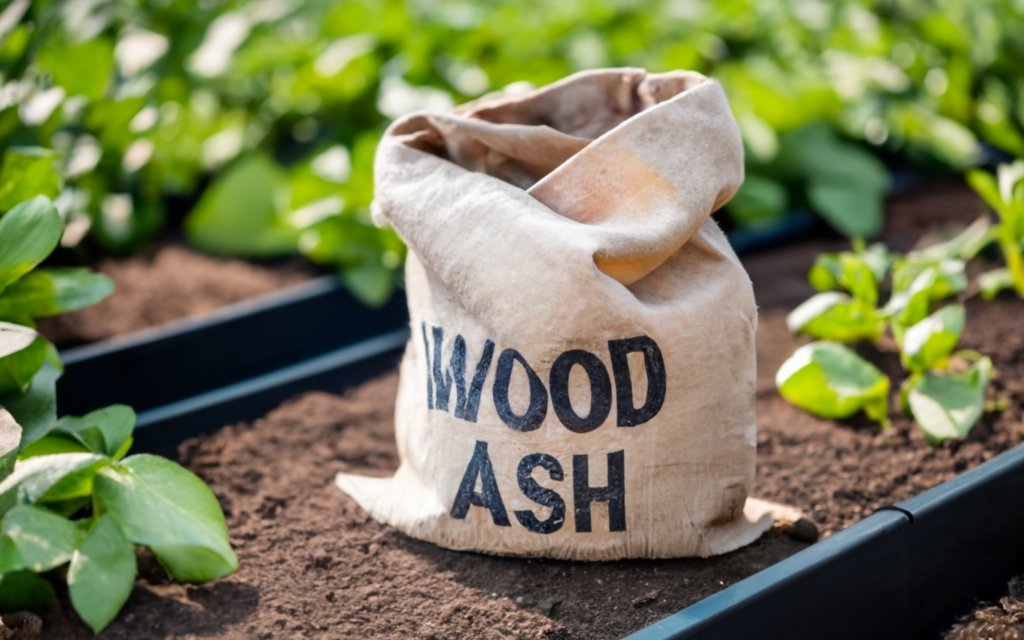
The nutrient content of wood ash is surprisingly diverse. When we say nutrients, we’re not just talking about one or two elements. We’re talking about a cocktail of goodness:
- Potassium: Good for the overall health and vigor of plants.
- Phosphorus: Helps with energy transfer in plants.
- Calcium: Important for cell wall structure.
- Trace elements: Tiny amounts, but essential for various plant functions.
So, now you’re thinking, “Great, so it’s like a multi-vitamin for plants?” Well, kind of! But, as with any supplement, knowing how and when to use it is crucial. Overdoing it can be just as bad, if not worse, than not using it at all.
Potassium and Flowering: What’s the Connection?
Let’s take a closer look at one of those nutrients: potassium. Ever wondered why your roses aren’t blooming as vibrantly as you’d like? Or why your tomato plant isn’t fruiting as much as it should? Potassium could be the missing puzzle piece.
Potassium plays a vital role in flowering and fruiting. It helps with water uptake, enzyme activation, and photosynthesis. In short, it’s like the energy drink for plants, boosting their performance and stamina. When plants have adequate potassium, they’re more likely to flower abundantly and produce juicy fruits.
So, the next time you see that pile of ash, remember it’s not just dust. It’s a potential nutrient boost for your garden. Just use wisely and keep things balanced!
Not All Veggies Like Wood Ash
Wood ash can be a beloved addition to many a garden, but not all veggies send out the welcome wagon. The alkaline kick from wood ash can shift soil pH levels. While some plants might be dancing in the garden over this, others might just give it a side-eye. It boils down to their preference for acidic soil versus alkaline.
The List: Veggies and Their Stance on Wood Ash
| Vegetable | Preferred Soil pH | Wood Ash Suitable (Yes/No/Maybe) |
|---|---|---|
| Potatoes | 5.0 – 6.0 (acidic) | No |
| Cabbage | 6.0 – 7.5 (slightly acidic to neutral) | Maybe |
| Tomatoes | 6.2 – 6.8 (slightly acidic) | Maybe |
| Peppers | 6.0 – 6.8 (slightly acidic) | Maybe |
| Parsley | 6.0 – 7.0 (neutral) | Maybe |
| Garlic | 6.0 – 7.0 (neutral) | Maybe |
| Onions | 6.0 – 7.5 (slightly acidic to neutral) | Maybe |
| Spinach | 6.0 – 7.5 (neutral) | Yes |
| Green beans | 6.0 – 7.5 (neutral to slightly alkaline) | Yes |
| Beetroot | 6.0 – 7.5 (neutral) | Yes |
(Note: The pH scale ranges from 0 to 14, with 7 being neutral. Below 7 indicates acidity, and above 7, alkalinity.)
Before showering your garden with wood ash, it’s wise to consider the veggie VIPs residing there and their pH preferences. It might just save you from a garden mutiny!
Blueberries to Radishes: Who Prefers Acid?
Not all plants dream of neutral or alkaline soils. Some of your garden favorites are true rockstars, living for the acid vibes. Think of them as the rebels of the plant world, defying the mainstream and loving every bit of it.
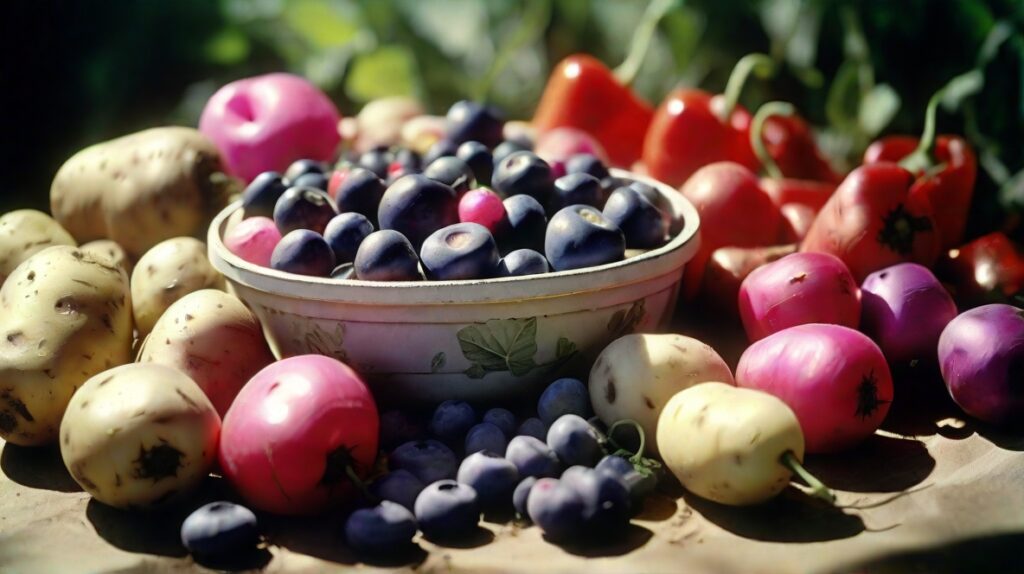
First up on the acid-loving list: blueberries. If you’ve ever tasted a ripe blueberry, you’d know they’re a burst of flavor. But did you know they thrive best in acidic to neutral soil conditions? That’s right, the tangier the soil, the happier the berry.
But blueberries aren’t the only acid-heads in the garden:
- Potatoes: These tuberous wonders are all about that acidic life. They love a good pH party on the lower end of the scale.
- Radishes: Crunchy and spicy, radishes are another fan of the acidic scene. It’s where they get their zing from.
- Peppers: Whether you like them hot or sweet, peppers prefer their soil with a hint of acidity.
- Other acid-loving plants: They range from fruits to veggies, each with a preference for that acidic touch.
Ever wondered why these plants are all about the acid? Acidic soil conditions often lead to specific nutrients being more available. It’s like their version of a buffet, where all their favorite dishes are front and center.
So, next time you’re planting blueberries, potatoes, or radishes, remember they’re the cool kids who like their soil a bit on the edgy side. Give them what they want, and they’ll reward you with delicious produce. Ready to groove to the acid beats?
How Much is Too Much? How to Apply Wood Ash
Imagine you’re cooking your favorite dish, and you’re about to season it. A pinch of salt can enhance the flavor, but pour in the whole salt shaker, and, well… disaster! The same principle applies when you use wood ash in your garden. A sprinkle can be beneficial, but dump the entire contents of your fireplace, and you might just have a garden rebellion on your hands.
Wood ash is like the seasoning of the gardening world. Used in the right amount, it can work wonders. But, just like that over-salted dish, excessive amounts can have adverse effects on your vegetable growth. The key, my green-thumbed friend, is moderation.
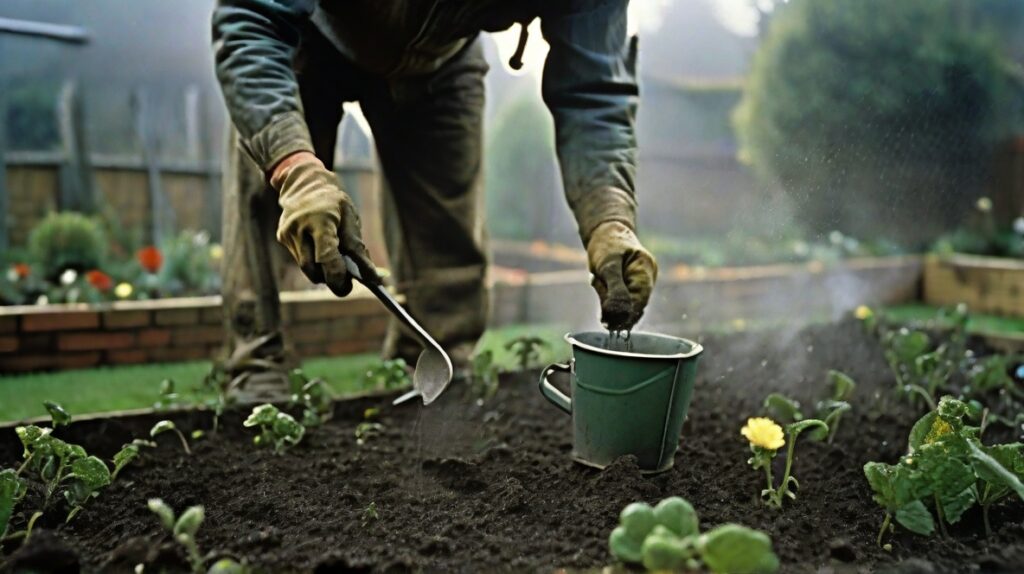
The Balance Game: Using Ash Effectively
So, how do we strike that perfect balance? Let’s break it down:
- Test Before You Dress: Before you apply wood ash, test your soil pH. Knowledge is power, and knowing your garden’s pH level is half the battle.
- Sprinkle, Don’t Smother: When adding wood ash to your vegetable garden, imagine you’re sprinkling powdered sugar on a pancake, not covering a snowy driveway.
- Keep an Eye on Your Plants: Plants have a way of telling us when they’re happy or upset. Yellowing leaves? Stunted growth? They might be signaling an ash overdose.
- Moderation is Key: We can’t stress this enough. It’s better to err on the side of caution than to go all out and regret it later.
Remember, gardening is a bit like cooking. It’s as much an art as it is a science. And just like in the kitchen, the secret ingredient is always love… and a dash of common sense. Ready to sprinkle some ash magic? Just be sure not to smother the magic out!
Before You Add Wood Ash: The Importance of Soil Testing
So, you’ve got a bucket of wood ash and a garden that’s screaming for some TLC. But wait! Before you go sprinkling that ash like confetti, let’s talk about a crucial first step: soil testing. Think of it as getting to know your garden’s inner secrets.
Why Test the Soil?
Soil testing is like taking your garden’s temperature. It tells you the pH levels of your soil, giving you a hint of its mood. Is it feeling acidic today? Or maybe a tad alkaline? Knowing this is essential, especially if you’re planning to introduce wood ash in the garden.

The pH Scale: A Quick Recap
Remember that pH scale from school? It ranges from 0 (very acidic) to 14 (very alkaline), with 7 being neutral. Most plants have their comfort zone somewhere on this scale. And guess what? Wood ash can shift that balance. So, before adding ash, you’ll want to know where your garden stands.
So, How Do You Test?
Simple DIY kits are available at most garden centers. Here’s how it usually goes:
- Collect a Soil Sample: Grab a bit from different parts of your garden.
- Mix with the Testing Solution: Each kit will have its own instructions, but generally, it’s a mix, wait, and see kind of deal.
- Check the Color: The resulting hue will tell you the pH level.
Easy, right?
Alright, garden guru, now that you’re armed with knowledge, you can make an informed decision about that ash. Remember, a happy garden is all about balance, and you’ve just taken the first step to achieve it. So, ready to get a bit dirty and discover your garden’s secrets?
Myths and Facts: Debunking Wood Ash Misconceptions
Ah, the world of gardening – where myths grow as wild as weeds! And when it comes to wood ash, there’s a fair share of tall tales floating around. Let’s set the record straight, shall we? Get ready to separate the facts from the fiction.

Myth 1: Wood Ash is Basically Magic Dust
Fact: While wood ash has its perks, it’s not a one-size-fits-all solution. It’s rich in certain nutrients, but it’s not a complete fertilizer. Plus, its alkaline nature means you need to use it wisely. Remember our chat about soil testing?
Myth 2: More Ash = Happier Plants
Fact: Overdoing it with wood ash can spell trouble. Excessive amounts can mess with the soil’s pH, leading to some very unhappy plants. Think of it like salt in a dish. A pinch? Perfect. An entire cup? Disaster.
Myth 3: All Plants Adore Wood Ash
Fact: Not all plants are on team ash. Some veggies, like the ones we discussed earlier, prefer acidic soil. So, sprinkling ash around them? Not a great move.
Myth 4: Wood Ash = Pest Repellant
Fact: There’s a rumor that wood ash can keep pests at bay. While there’s some truth here (it can deter certain pests), it’s not a comprehensive pest solution. Don’t toss your organic pest repellents just yet.
Myth 5: It’s All About the Ash
Fact: While benefits of using wood ash are numerous, it’s essential to consider the bigger gardening picture. Soil health involves multiple factors, and ash is just one piece of the puzzle.
Wood Ash Alternatives: Other Soil Amendments to Consider
So, you’ve been on this wood ash journey with me, but let’s face it, not everyone has heaps of it lying around. Or maybe, just maybe, you’re keen to diversify your soil-amending game. Why limit yourself, right? Let’s peek at some other awesome ways to boost your garden soil without resorting to the ashy stuff.
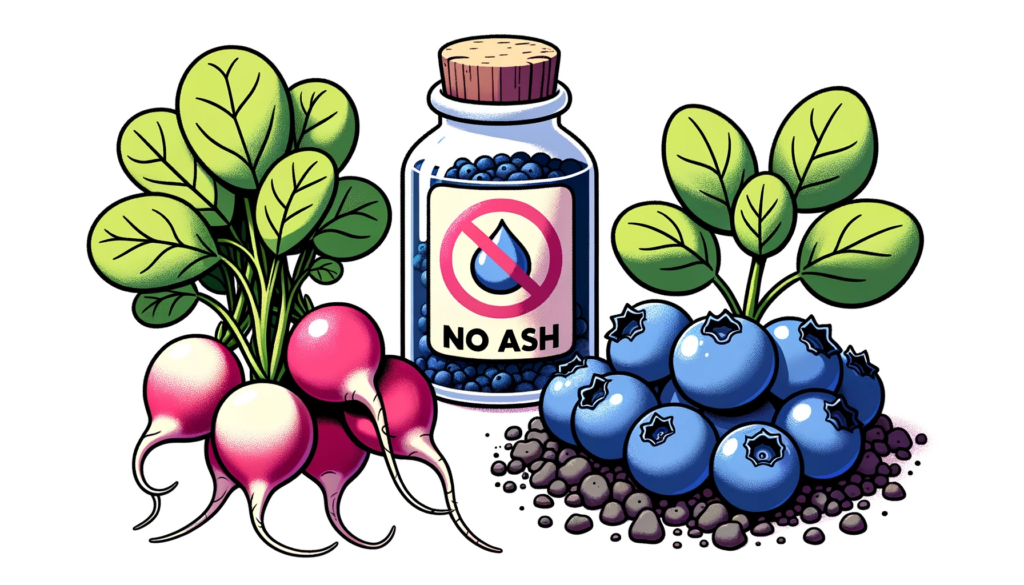
- Compost: The garden’s gold. Rich in nutrients, it improves soil texture and promotes beneficial microorganisms. Have you started your compost pile yet?
- Manure: When aged and composted, animal droppings are a tried-and-true soil amendment. Just be careful not to go overboard!
- Bone Meal: A fantastic source of phosphorus. Ideal for promoting flower and fruit growth. How’s that for a blooming good idea?
- Lime: Adjusts the soil’s pH, making it less acidic. It’s like the opposite twin of wood ash. Curious, huh?
- Leaf Mold: Decayed leaves are a jackpot for soil texture. And guess what? They’re often free if you’re willing to rake them up.
- Worm Castings: Fancy name for worm poop, but your plants will thank you. It’s packed with nutrients and is a fantastic conditioner.
Whether you’re exploring alternatives or supplementing your wood ash use in the garden, there’s a world of options out there. The key is understanding your soil’s needs and adjusting accordingly. The more you know, the more your garden will grow. Ready to try something new? Let’s get those hands dirty! (But in a clean way, of course!) 😉
FAQ: Burning Questions About Wood Ash
So, you’ve got some burning (pun intended!) questions about wood ash? Well, you’re in luck! I’ve got the answers. Let’s jump right into it.
Q: Is wood ash good for flowers?
A: Absolutely! Many flowers love the potassium boost from wood ash, which helps them bloom beautifully. However, always keep an eye on the soil’s pH, because too much ash can make the soil too alkaline for some flowers. Ready for a blooming garden?
Q: What shrubs benefit from wood ash?
A: A lot of shrubs can benefit from the nutrients in wood ash, especially those that appreciate a bit of a pH lift. Lilacs, for instance, thrive with a sprinkle of ash. But remember, moderation is key! Over-ashing isn’t a trend in gardening.
Q: Storing Ash for Later Use in the Garden or Landscape – any tips?
A: You bet! Store your wood ash in a dry, sealed container to keep out moisture. Think metal bins or even old trash cans with tight-fitting lids. And a pro tip? Keep it away from children and pets. Safety first, green thumb second!
Q: Using Wood Ash in Compost – yay or nay?
A: Big yay! Wood ash can be a great addition to compost, as it introduces potassium and lime. However, don’t go overboard. A sprinkle now and then is enough. Mix it well to ensure an even spread. And remember, compost loves diversity, so keep adding those kitchen scraps and garden waste!
Got more questions? Don’t hesitate! Gardening is all about learning, experimenting, and, of course, enjoying the fruits (or flowers) of your labor. Happy gardening! 🌱🌺🌳
References:
- University of Saskatchewan. (n.d.). Using Wood Ash in the Garden. Retrieved from https://gardening.usask.ca/articles-and-lists/articles-how-to/using-wood-ash-in-the-garden.php
- Fannin Gilmer County Extension. (2020, December). Using Wood Ash in the Garden. Retrieved from https://site.extension.uga.edu/fannin-gilmer/2020/12/using-wood-ash-in-the-garden/
- Royal Horticultural Society. (n.d.). Using Wood Ash in the Garden. Retrieved from https://www.rhs.org.uk/soil-composts-mulches/wood-ash-using-in-garden
- Mansfield News Journal. (2023, January 3). The Benefits and Concerns About Using Wood Ash in Gardens. Retrieved from https://www.mansfieldnewsjournal.com/story/life/2023/01/03/the-benefits-and-concerns-about-using-wood-ash-in-gardens/69763924007/
